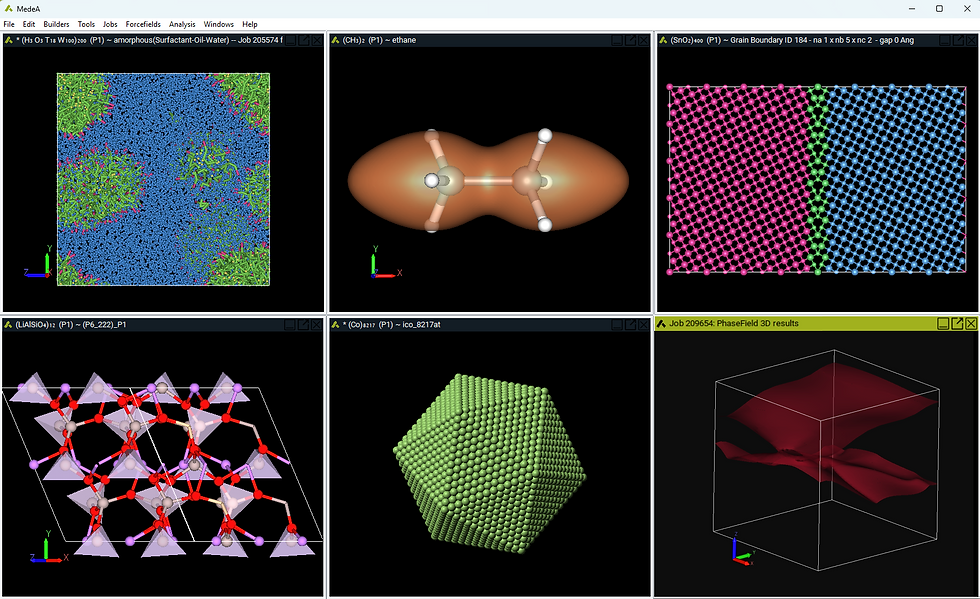MedeA 2.16 released
- Katherine Hollingsworth
- Nov 17, 2014
- 2 min read
What’s New in MedeA Version 2.16
MedeA 2.16 brings substantial new capabilities and features to the MedeA environment: A new server: UNiversal CLuster Expansion (UNCLE), allows users to employ the cluster expansion technique for large-scale modeling of composition dependent materials properties including order-disorder phenomena based on the accuracy and predictive power of VASP first-principles methods, MedeA-LAMMPS can now compute the surface tension of liquids, and enhanced layer building capabilities can be used to create multilayer models to simulate interface properties such as adhesion. In addition the new InfoMaticA/COD interface provides access to more than 250,000 molecular crystal structures.
Extensive enhancements to the MedeA environment include support for direct SMILES import, molecular path analysis to create individual molecules from composite structures, forcefield enhancements to PCFF+ for amines, enhanced thermochemistry capabilities for the MedeA-MOPAC interface, and a slew of additional enhancements and improvements.
MedeA is the leading environment for Materials Design, Inc., modeling, and simulation for Windows and Linux environments.
MedeA 2.16 New Features
MedeA-UNCLE:
Automated optimization of cluster expansions by fitting effective cluster interactions to VASP ab-initio results, applying a genetic algorithm or compressive sensing techniques. This explores phase stabilities and visualizes the ground state diagram (convex hull). Order-disorder phenomena and the evolution of microstructures are explored by means of large scale lattice Monte Carlo simulations. Ensembles of up to a billion of atoms can be investigated without giving up the accuracy and predictive power of ab-initio methods.
MedeA-LAMMPS:
Support for surface tension calculations within slab models. The surface tension may be computed for any liquid system supported by MedeA-LAMMPS (organic liquids, molten metals, and molten oxides, for example).
MedeA-VASP:
Automatic analysis now reports key electronic structure features, such as metallic, insulating or semiconducting behavior. The size and type of band gaps is detected and reported.
MedeA PCFF+:
Enhanced amine parameters
Enhanced parameters for ethers and unsaturated hydrocarbons
MedeA-Infrastructure and Builders:
Enhanced graphical output options
Recording of animation frames for movie creation
A broad range of installer updates and enhancements
Performance enhancements in amorphous model building
Thermoset Builder extensions to support bonding of adhesion promoters and fixing of metal or oxide atoms during cross linking
A stacked layer builder that facilitates the construction of composite models to enable work of adhesion (for example) calculations
Copy/Paste partial or full structure in another
Display atom labels (name, element, charges, ...)
Line rendering mode: faster for large structures
Direct SMILES string import
MedeA-InfoMaticA:
Updated with an interface to the Crystallography Open Database (COD)
MedeA-GIBBS:
Extensive updates to forcefield handling - the MedeA-GIBBS interface now supports the .frc file format. This facilitates updates to GIBBS forcefields making the incorporation of literature forcefields and potentials straightforward; and improves interoperability with MedeA-LAMMPS
A range of additional enhancements and updates have been made to the MedeA-GIBBS interface to enhanced usability and efficiency.
Extensive additions to predefined molecular systems have been made for the MedeA-GIBBS structure library for petrochemical applications



Comments